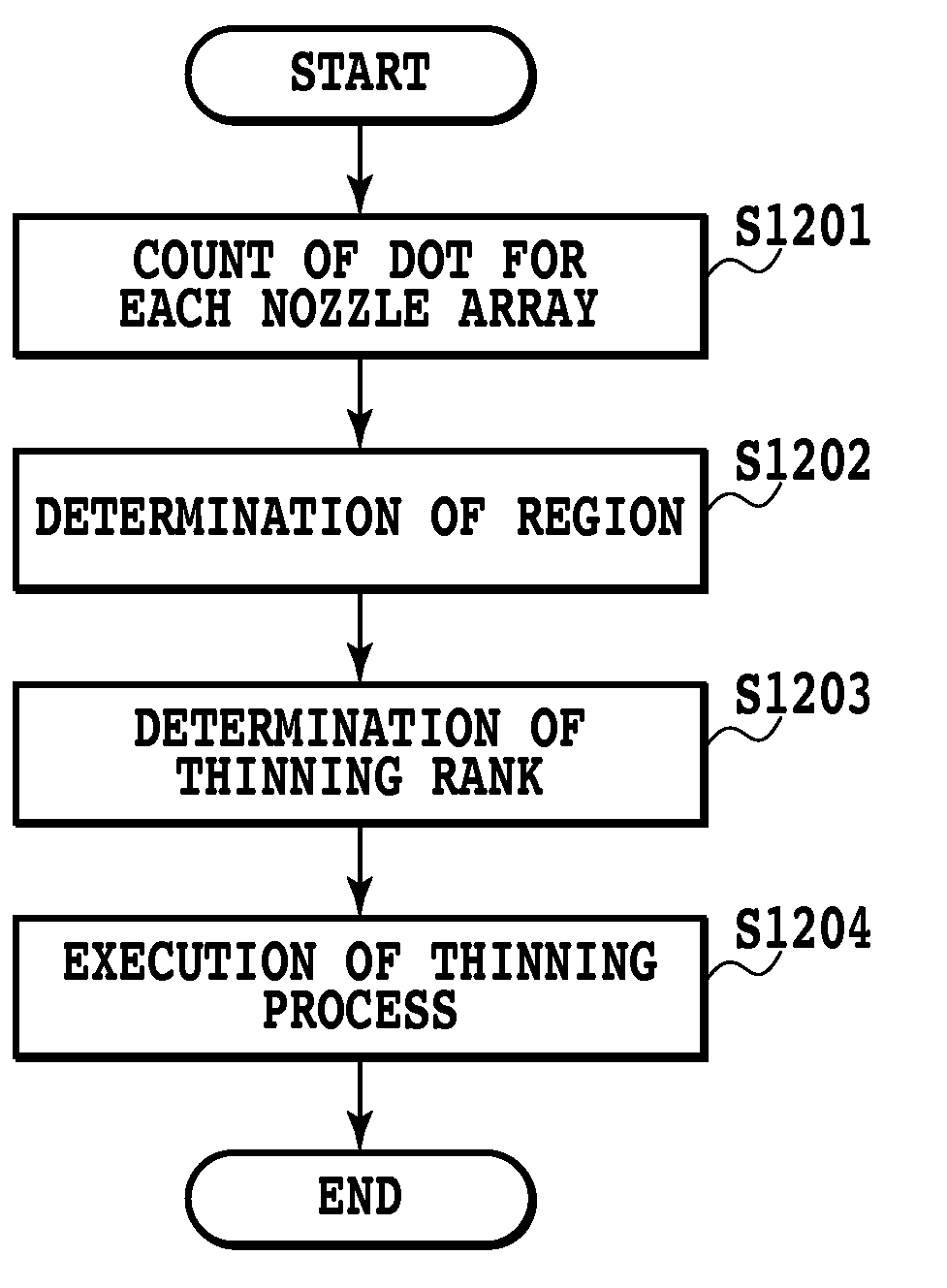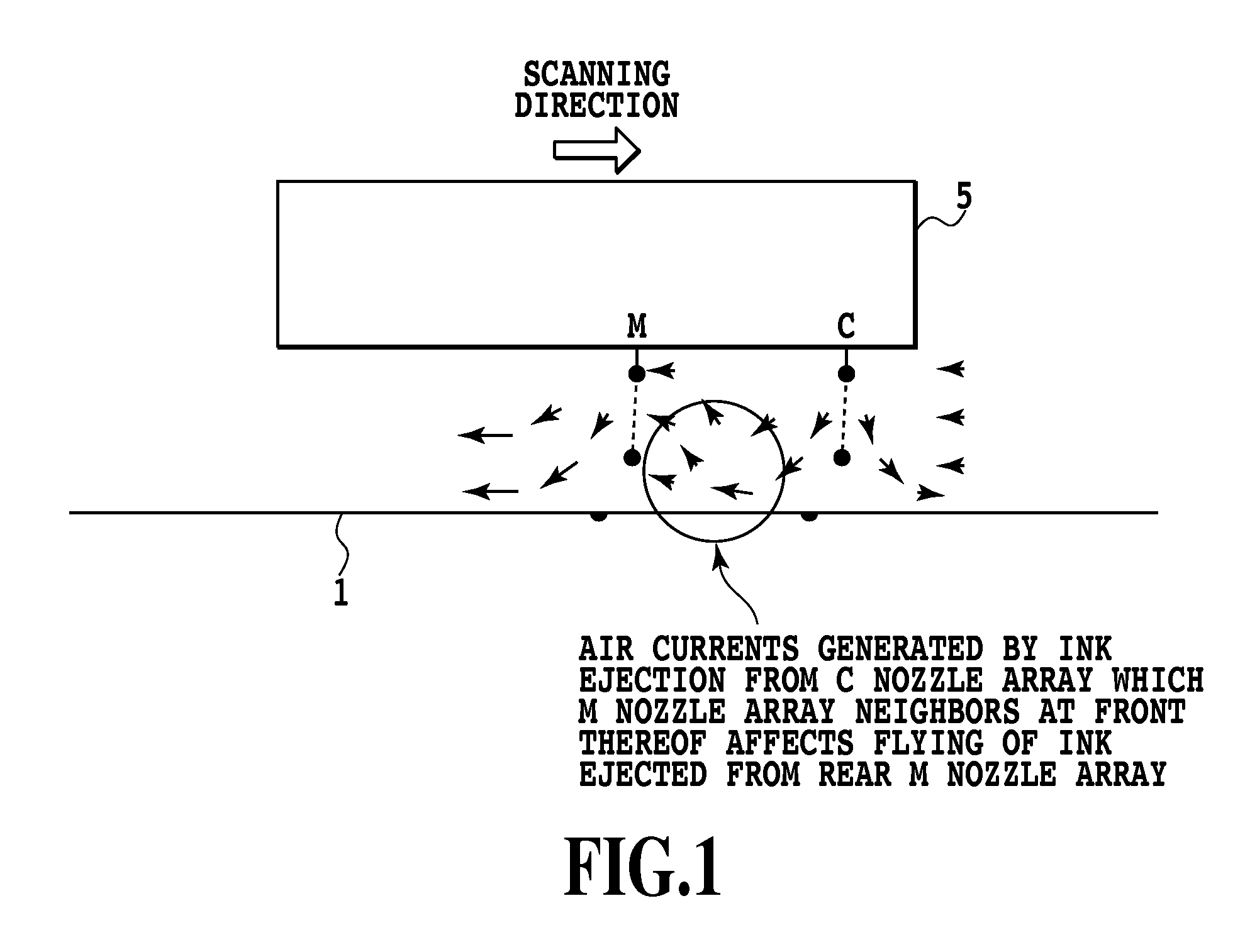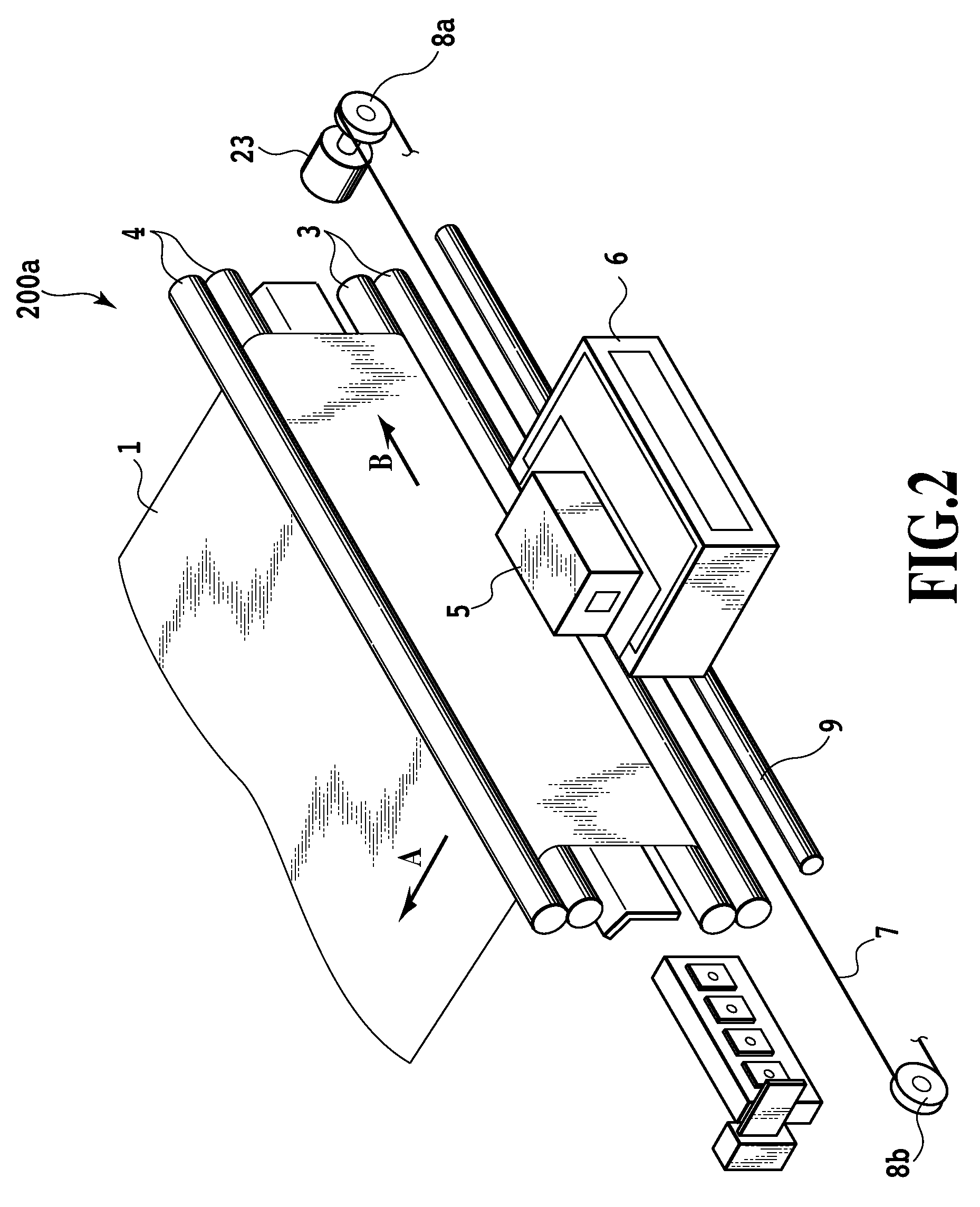Inkjet printing apparatus and inkjet printing method
a technology of inkjet printing and printing apparatus, which is applied in the field of inkjet printing apparatus and inkjet printing method, can solve the problems of inadequacies, inadequacies, and uneven ink density in the form of white stripes,
- Summary
- Abstract
- Description
- Claims
- Application Information
AI Technical Summary
Benefits of technology
Problems solved by technology
Method used
Image
Examples
first embodiment
[0048]A print head according to a first embodiment of the present invention has 512 ejection openings (nozzles) at a density of 1200 ejection openings per 1 inch (1200 dpi) for one color of ink. In the case of one-pass printing, a conveying amount of a printing medium is (512 / 1200) inches≈10.84 (mm), while, in the case of N-pass printing, it is a conveying amount obtained by dividing the number of 512 ejection openings by N. In other words, in N-pass printing, 10.84 / N (mm), which is obtained by dividing the conveying amount in one-pass printing by N, is a normal paper conveying amount for a single scan.
[0049]In both cases of one-pass and multi-pass printing, an only slight error may occur in a conveying operation by a paper conveying mechanism. However, when an end deviation, which is a target of the present embodiment, occurs, even in an ideal state in which there is no above-described error, it is impossible to obtain continuous images across a boundary between former scanning are...
second embodiment
[0087]The present invention can also be applied to the case of using a so-called full-line head in which nozzles are arranged in accordance with the width of a printing medium to be conveyed. FIG. 17 is a view illustrating an example of such a full-line head. The full-line head illustrated in the drawing is constituted by arranging multiple chips, in which nozzle arrays of respective C, M, Y, and K are arranged, so as to form an overlapping part. In the drawing, only four chips are illustrated for simplification.
[0088]In the inkjet printing apparatus, a printing medium is to be conveyed in a predetermined direction relative to a print head in which a plurality of head chips having multiple ejection opening arrays formed by arranging multiple ink ejection openings (nozzles), the plurality of chips being arranged so that some of the ejection openings overlap each other in the predetermined direction.
[0089]Also in a configuration using such a full-line head, due to conveying of a print...
PUM
 Login to View More
Login to View More Abstract
Description
Claims
Application Information
 Login to View More
Login to View More - R&D
- Intellectual Property
- Life Sciences
- Materials
- Tech Scout
- Unparalleled Data Quality
- Higher Quality Content
- 60% Fewer Hallucinations
Browse by: Latest US Patents, China's latest patents, Technical Efficacy Thesaurus, Application Domain, Technology Topic, Popular Technical Reports.
© 2025 PatSnap. All rights reserved.Legal|Privacy policy|Modern Slavery Act Transparency Statement|Sitemap|About US| Contact US: help@patsnap.com



